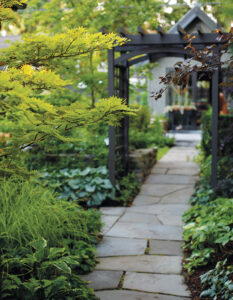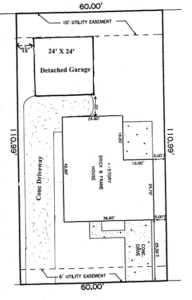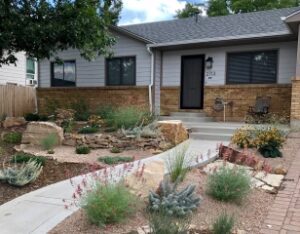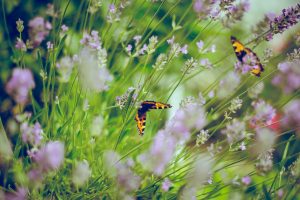Whether you’re adding a few flowering shrubs to help elevate your garden design or you’re finally ready to build your dream outdoor living area, having a garden project can be exciting. But have you ever gone to your local nursery to get ideas or pick out your plants, and felt overwhelmed by all of the options? We know that with so many types of plants available, it can be hard to know where to start.
Maybe you’re in the early planning stages of the landscape design process and are looking into hiring a professional to help turn your vision into reality. Or you’ve already scheduled a consultation with a landscape designer and are waiting for your upcoming appointment.
You may think that you have to wait until you meet with a garden designer before you can get things in motion. But no matter how large or seemingly small your project is, there are a few helpful things that you can do now to plan your backyard landscape. We’ve put together these five landscape design tips that will streamline the entire process and make sure your finished custom landscape design is in line with your expectations and vision.
Why should you get a landscape designer?
Before diving into our tips, you may be asking yourself, why do I need a landscape design in the first place? In addition to the overwhelming amount of options for plants and materials, it can also be difficult to convey the scale and complexity of your property with just pictures. When choosing landscape features, it is helpful to be able to walk a designer through your space so that you both can get a sense of the size and scale of your project. 
Create a list of goals for your outdoor space
If you are considering a landscape design, think about your goals and expectations. Create a list of goals that you want to accomplish with your landscape. Basically, think about what you want and where you want it. Your original backyard landscape design may not have the correct types of plants for the climate in your area. A landscaper can help you understand the different seasonal plant types and how they will work in your space. The more information that you can compile of your landscape remodel ideas, the better.
- What is your current landscape situation? Are you a new homeowner working from a completely blank slate and need to install patios, retaining walls or other hardscapes? Or perhaps you have an existing landscape that you know needs to be refreshed. Knowing exactly where you are starting from and having an idea of where you want to end up is a good place to begin.
- Are there any major problems that you’d like to be addressed? Providing as much information as you can up front about issues that exist in the landscape can help determine the best course of action for fixing them. For example, does water drain off of your neighbor’s property and onto yours?
- Give some thought on how you will be using the space. Do you want a hedge to create privacy between you and your neighbors? Are you looking to cut back on lawn area and plant a more drought tolerant landscape? Would you like to create an edible garden with vegetable boxes and fruit trees?
Having these considerations in mind ahead of your design consultation is the first step toward transforming your landscape.
Have your Plot Plan handy
To help you visualize your space, acquire a plot plan of your property. A plot plan, also called a site plan, is a scaled drawing that shows the exact property size and location of major structures such as your house, garage, driveway and any decks or patio areas. This can be the official plan from your home’s builder, which can be easily obtained if your home is newly built. You can also request a copy of your plan from your County Assessor’s website. 
Having a to-scale map that you and a designer can reference and write notes on is a great way to bring your ideas to life. Your plot plan is also a great tool to give you a very detailed representation of the critical structures in your yard. If you are unable to procure a plan, an aerial view print out from Google Earth should be sufficient enough for an initial garden landscape design.
Know your Micro climate
When creating a landscape plan, it is important to take note of your home’s microclimate. This includes things like sun exposure and shade, wind direction and average intensity, and grading and drainage flows. Walk around your property at different times of the day and get a feel for the elements.
- Sun Exposure: How does the sun fall on your property? Try to determine which areas of your yard get full sun (6+ hours a day) partial sun (4-6 hours), partial shade (2-4 hours) or mostly shade (less than 2 hours a day).
- Wind: How windy is your property? If you are in a high wind area, you might need to add special protection for some plants during the winter so they don’t dry out, or stakes so that trees don’t bend or break.
- Drainage and Erosion: Do you have areas of your property that are sloped and need retaining walls or plants to prevent sliding and erosion? Are there areas where water and runoff drain to and contribute to standing water?
- A note about Secondary Water: Secondary water is untreated, non-potable water that comes from a variety of sources and is often used for landscape irrigation. Many of our customers living in Southwest Salt Lake County and Northern Utah County receive high alkaline water from Utah Lake, which contains excess salts that some popular types of plants cannot tolerate.
These site specific conditions help identify areas where some plants may be better suited than others. For instance, if you have a bedroom window facing south west that gets intense sunlight during the hottest part of the day in the summer, you may want to consider planting a large tree or a row of columnar trees to provide shade. Similarly, if you have a spot that doesn’t get much sun at all, you’ll need to select plants that are adapted to low light.
You don’t need to have exact measurements or detailed soil analysis. Just having a general idea of the weather conditions around your home and neighborhood will be a good baseline for you, your garden designer and landscaper to discuss.
Get inspired with photos
Once you have a sense of your property and micro climate, create a vision for the plants and other elements you want to see in your landscape. Think of this step as creating a mood board of your ideas.
If you are envisioning specific landscape architecture, native garden design or aesthetic, such as a lush English garden or drought-tolerant native prairie, gather pictures that inspire you. A Google or Pinterest search can help you, just bear in mind that Utah has a unique climate and a garden design layout from California or Hawaii might not be appropriate for your home. Although there may be things that you feel like you’ll miss out on, there are many beautiful alternatives to choose from that will grow well on your site. You may also want to consider a perennial landscape design so that your plants will live on for three years or longer.
A great way to find plants that would do well in your yard is to look around at established landscapes in your neighborhood. If there’s a yard or plant that you enjoy, snap a picture of it. If you are looking to see how well specific plants will grow in your climate, be sure to check out the USDA Plant Hardiness Zone Map, which gives plants a rating based on how cold hardy they are. Other great public resources are your local botanical gardens and arboretums, such as Red Butte Garden in Salt Lake City, Ashton Gardens at Thanksgiving Point and the Conservation Garden Park in West Jordan.
Also, make sure to discuss any plants that you strongly dislike, or that anyone in your family may be allergic to. If there is a severe bee allergy in your family, avoid any bee-attracting flowering plants, especially near high-traffic areas.
Have a budget in mind
For many clients, discussing a budget for a residential landscape design is the most nerve-wracking part of making your landscape design plans. Knowing your goals and setting realistic financial limits up front will help to manage expectations throughout every phase of the project.
Depending on the scale and scope of work, your landscape design may need to be implemented in phases. Think about what you want to accomplish first within a given time frame and budget. If you have hardscapes to lay down, those will need to be installed before you can plant around them. You’ll also need to factor in your total budget when choosing landscape features such as types of materials and even the size of plants that you end up buying.
Getting your landscape plans underway
A landscape design is exciting because it means that your vision will finally be underway. The better prepared you are at the start of your process, the better the outcome will be for everyone. You’ll walk away feeling more excited and better prepared for the next steps!

